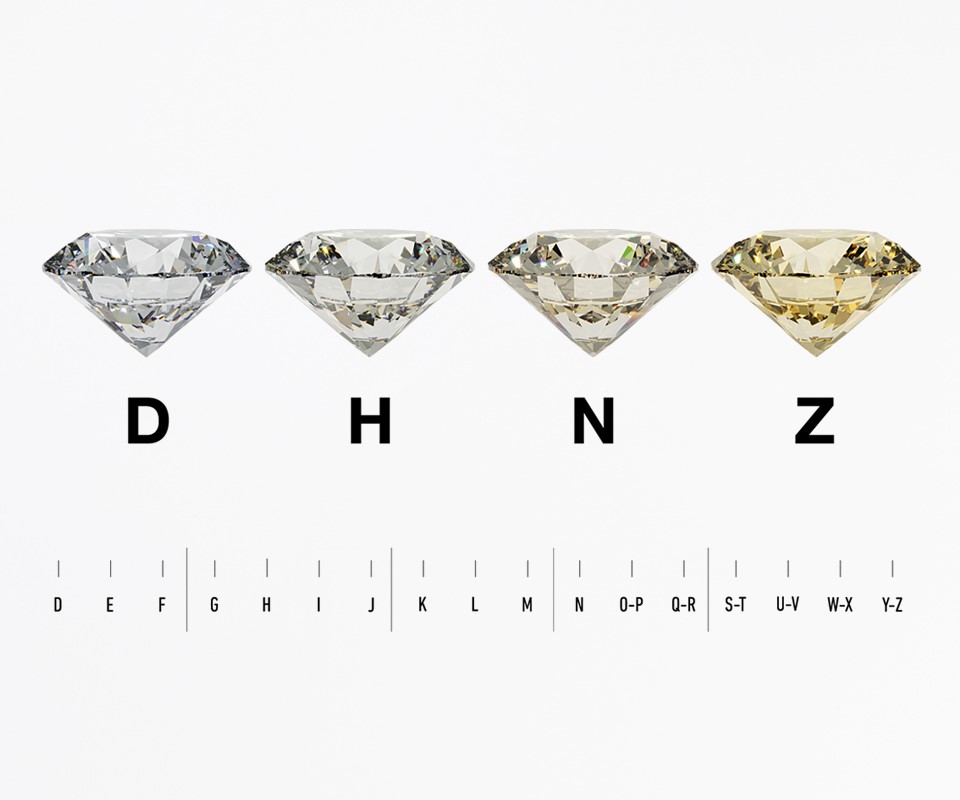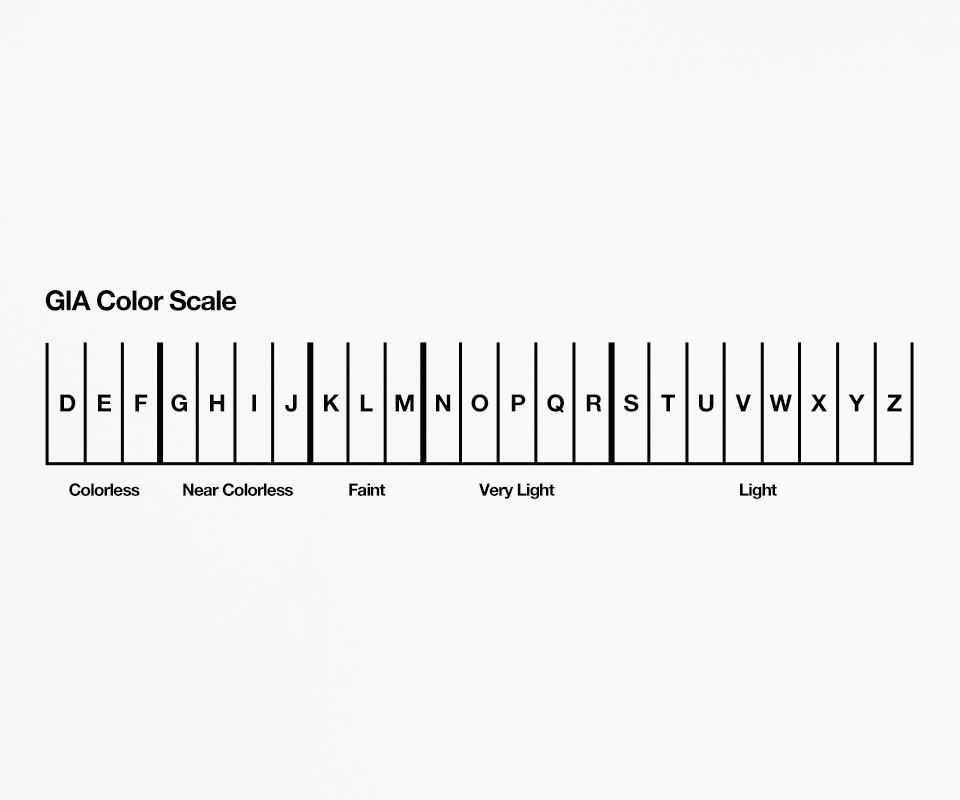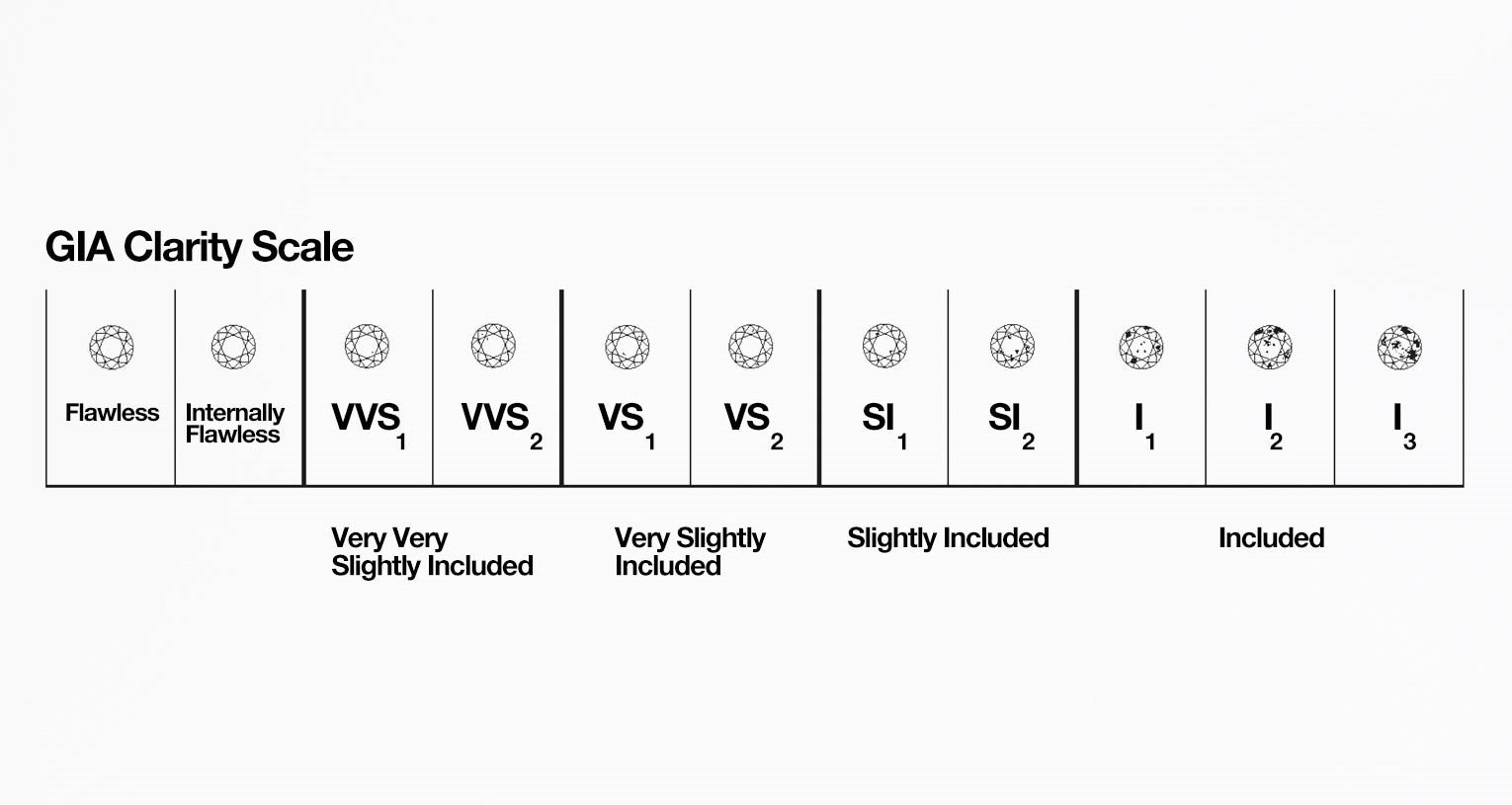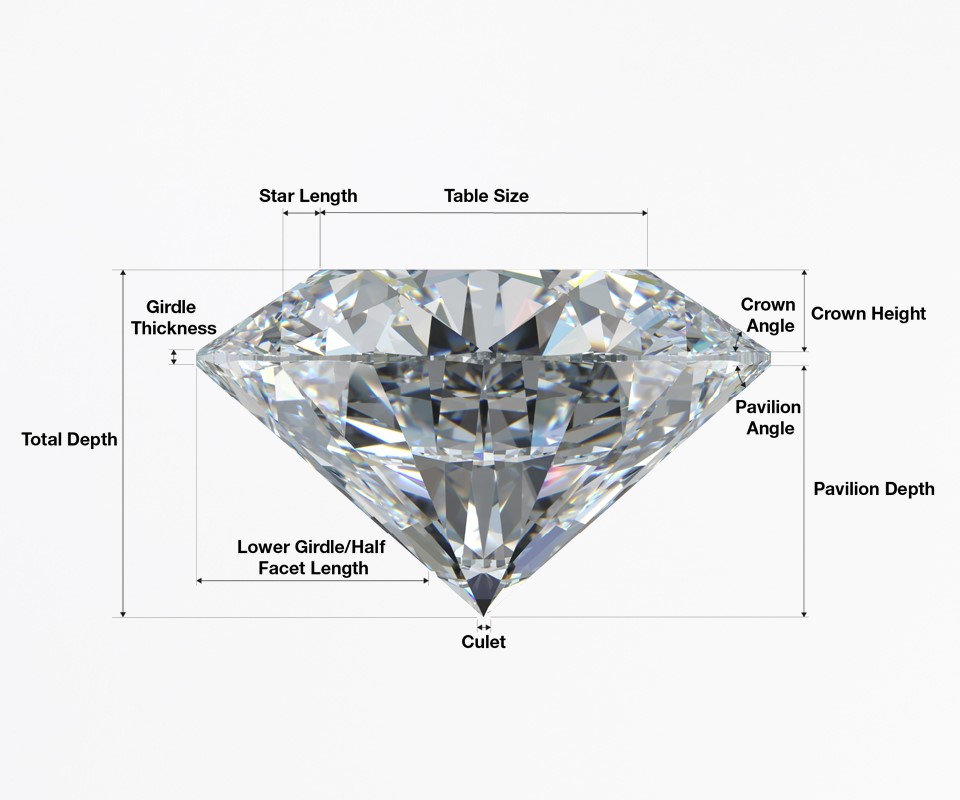The 4Cs are the industry standard for evaluating diamond quality. They are also the best way to understand your diamond, and to ensure accuracy in the evaluation of your diamond’s unique characteristics. While choosing a diamond is a very personal decision, evaluating a diamond should always be a matter of precision.
When most people imagine a diamond, they picture one with little to no hue. Often when we talk about diamond color, we are actually talking about the absence of color. As subtle as color distinction may be, color variations from the most obvious to subdued can drastically alter diamond quality and price. Diamonds actually come in a variety of hues, from colorless to yellow, gray, brown and nearly every shade of the rainbow. Luckily, diamond color isn’t a matter of opinion. Proper color evaluation is a matter of expertise. The correct way to evaluate diamond color is in precise conditions, under controlled lighting, where stones are compared to masterstones with established color grades. The D-to-Z diamond color scale, as followed by the all the laboratories, is regarded globally as the universal standard for color grading. Where D for colorless to Z for light.
Fancy color refers to any diamond with a color outside of the normal color range. Unfortunately, there are no universal guidelines on the use of the term Fancy when describing color, but there is a general agreement within the gem and jewelry industry that it refers to yellow or brown diamonds that have more color than a Z masterstone or they exhibit a color other than yellow, gray or brown.





Every diamond is unique. Formed by extreme heat and pressure deep within the earth, it isn’t uncommon for diamonds to contain birthmarks. These clarity characteristics are created when small crystals are trapped in the diamond. As they grow, pressure and stress can cause inclusions and blemishes – sometimes only visible under a microscope. The clarity of a diamond is based on the size, location, visibility and number of inclusions or blemishes. Internal and surface reaching characteristics are called inclusions. External features are called blemishes. Precise clarity grading is the secret to accurately evaluating a diamond. It is essential when buying a diamond to secure an accurate assessment. Many blemishes and inclusions are not visible to the naked eye. Wherever you go in the world, whatever language is spoken, when buying a diamond, you will likely hear terms like VVS1 or SI2 used to describe clarity. Every diamond is evaluated under 10x magnification and assigned a clarity grade. A flawless diamond would receive an (FL) clarity grade; a diamond with obvious inclusions might receive a clarity grade of I3. Diamond clarity grades are based on the number, size, relief, nature, and location of characteristics. The clarity rating of a diamond is a reflection of the overall appearance of the stone – although many of these characteristics will likely not be visible to the naked eye. Every diamond is truly unique, however most diamonds you see in jewelry stores fall between VS (very slightly included) and the SI (slightly included) on the clarity grading scale.
The cut of a diamond is a question of craftsmanship. When you hear words like Brightness, Scintillation and Fire, they describe how masterfully a diamond is cut. A diamond’s cut refers to how it interacts with light. While a term like oval would refer to the shape, or outline of a diamond, cut also describes the overall design of a diamond, including the arrangement and proportions of the diamond’s facets. Diamond cut grades are only given to round brilliant cut diamonds because they are the only cut that have standardized facets. All other shapes are referred to as fancy shapes, which includes marquise, emerald, pear, oval, hearts and even triangles. Proportions impact the face-up appearance, allure and attractiveness of diamonds. There are many components to consider when assessing the overall cut quality of a round brilliant diamond, one of which is the individual’s preference. Each grade range represents a range of proportion sets, so there is plenty of room for personal preference within a preferred grade range. There is a nearly unlimited combination of proportions possible, and all of them impact the interaction with light, and ultimately how attractive the diamond appears.

Carat measures weight, not size. A metric carat is defined as 200 milligrams. Each carat is subdivided into 100 points, allowing for measurement to the hundredth decimal place. Carat weight can be measured to the thousandth decimal place for rounding purposes. The term carat weight comes from carob seeds and has been in use since the 1500s. Early gem traders used to use small uniform seeds to counterweight their scales. Today a carat is a standard milligram measurement of weight, recognized and used globally. Certain carat weights are considered to be magic sizes for their desirability – 1.00 carat, 1.50 carats, and 2.00 carats. Although it is difficult to visually distinguish a 0.99 carat diamond from a 1.00 carat, the price difference can be significant. When shopping for a diamond, you may hear a jeweler refer to a diamond’s weight in points, calling a diamond that weighs 0.25 carats a “twenty-five pointer.” Diamonds that weigh more than one carat, like a 1.08 carat stone will be referred to in carats and decimals, for example “one point oh eight carats.” If two diamonds were identical in color, clarity, and cut, but one had a larger carat weight, then that diamond would be more rare and the price would likely increase accordingly. However, bigger isn’t always better because two diamonds of the same carat weight aren’t necessarily equal. It is essential to have the color, clarity and cut of a diamond evaluated as well. Remember, the value and quality of a diamond reflects all 4Cs and not just carat weight.